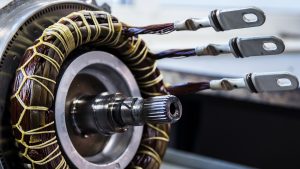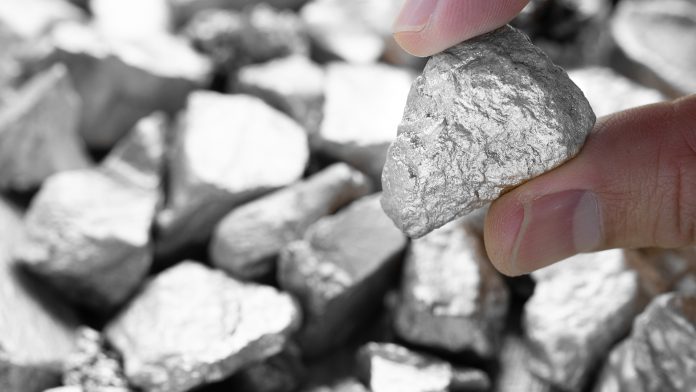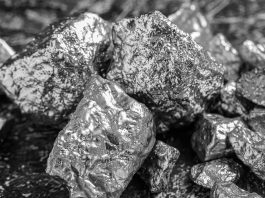Shane Hartwig, Executive Director – Finance at Northern Minerals Limited, discusses how the company’s flagship Browns Range rare earths project can contribute to the establishment of robust alternative supply chains for permanent magnets.
The electrification era is well and truly upon us, with countries around the globe working to fulfil ambitious climate targets to decarbonise the planet. Doing so will require a co-ordinated effort to source critical minerals that are essential in manufacturing a range of green technologies – such as permanent magnets. Northern Minerals is uniquely positioned to reinforce these supply chains through its leading Browns Range rare earths project in Western Australia.
The Innovation Platform spoke to Northern Minerals’ Shane Hartwig to find out how the company plans to enhance supply chains of these essential green transition materials.
Can you tell us more about Northern Minerals and its key partners?
Northern Minerals has been around for more than a decade and started life as a uranium explorer. More recently, the company has been concentrating on developing its key Browns Range project and in particular the Wolverine Deposit, a key feature of which is the dominance of high value dysprosium and terbium and other heavy rare earths that are essential ingredients in the production of permanent rare earth magnets used in clean energy, military and high technology solutions.
The company has recruited a range of industry-leading talent to drive its ambitions. At the end of 2021, Nick Curtis joined as Non-Executive Chairman. He is considered a pioneer of the rare earths industry and was one of the original founders of Lynas Corporation, which is currently acknowledged as one of the world’s premier rare earth producers outside of China.
Early in his appointment to Northern Minerals, Curtis commissioned an independent peer review of the resource modelling which resulted in a ~47% increase in the Wolverine REE Mineral Resource estimate, sought to focus on mining and processing to produce REO concentrate with a secondary focus on advancing understanding of other Wolverine style deposits within the Browns Range system.
Following on from this work, the company entered a strategic partnership with Iluka Resources including the signing of a rare earths concentrate supply agreement and a funding package. Iluka are a significant Australian-based miner with a long history in the mineral sands industry, and are in the process of constructing a rare earths refinery in Australia which will achieve an independent supply of rare earth oxides, essential to global electrification and decarbonisation.
The production of dysprosium and terbium rare earth oxides in concentrate from Browns Range will complement Iluka’s suite of rare earths products, in particular neodymium and praseodymium, all of which are critical components in permanent rare earth magnets used in high end applications including EV motors and wind turbines.
Can you detail the Browns Range project and how it will boost the rare earth supply chain?
The Browns Range project is in the Kimberley region of WA. Whilst Browns Range is our core project, other projects we have, such as Gambit West, John Galt, and Boulder Ridge, are all highly prospective for heavy rare earths. Within the Browns Range Project, we are focusing on the development of the Wolverine deposit. Our strategic objective over the next two years is to get the Wolverine deposit into production.
The Browns Range resource sits within a unique dysprosium and terbium-rich setting, and we believe there is a significant resource growth opportunity on top of the existing resource itself. The company has owned the project for over 16 years and has undertaken $70 – $80m of exploration on it.
Over 135,000 metres of drilling have been done, so the resource is well known. To date, we have just over 81,000 tonnes of rare earth oxides defined over the Browns Range project, with approximately 61,000 tonnes contained within the Wolverine deposit. On an initial mine life basis, that gives us just over nine years at this stage. However, our confidence in the resource will enable us to extend that mine life.
As part of the project’s recent development, the company operated a large-scale pilot plant at Browns Range for three years – from 2018 to 2021. The pilot plant was about 10% scale of a commercial-scale facility, producing both a REO concentrate and a mixed RE carbonate. It did the mining, beneficiation and produced a concentrate and then, with further processing, produced and sold a mixed rare earth carbonate product.
Through this process, we developed a deep knowledge of the orebody and the beneficiation process and also the hydrometallurgical process. During the Pilot Plant Phase, the process had two phases: the mining and beneficiation process to produce a REO concentrate and then fed this through a hydrometallurgical plant to produce a mixed RE carbonate. Based on this experience coupled with Nick Curtis’ experience from Lynas, it was decided that, going forward, Northern Minerals’ development profile should be restricted to a mining and beneficiation operation and produce a REO concentrate for sale. This would reduce overall project capital and technical complexity.
That is why the Supply Agreement entered into with Iluka is important. We aim to produce a REO concentrate to sell this Iluka, and they will complete the balance of the process including cracking, separating, and selling the rare earth oxides.

Northern Minerals are in a situation where we have defined our resource, built and operated and learnt from a large pilot plant operation, established a supply agreement with a significant offtake partner, and are in an environment where rare earths are crucial to this changing world, particularly in developing rare earth permanent magnets for electrification technologies.
What are permanent magnets and their role in global electrification?
There are various permanent magnets, but we’re interested in rare earth permanent magnets used in high-performance applications. These high-performance technologies operate at high temperatures in electric vehicles (EVs), wind turbines, and defence applications. While Nd and Pr are required for these magnets, our Dy and Tb allow the coercivity (i.e. magnetic strength) to be maintained under those high temperatures, meaning when working, these rare earth permanent magnets retain their magnetic ability.
What challenges face the permanent magnets supply chain?
The inflection towards electrification and decarbonisation is undoubted – permanent rare earth magnets play a critical role in the realisation of these processes, which creates strong long-term demand for key magnet minerals, however there currently lacks a diversity of supply of key permanent magnet materials including neodymium, praseodymium, dysprosium and terbium with China being responsible for the majority of the world’s supply.
So, from a Northern Minerals perspective, our rare earth elements can contribute to creating an alternative supply chain for these critical minerals. Our specific oxides, Dy and Tb, are particularly valuable in that there is limited production outside of China/Myanmar. When one country dominates this supply chain and the expected demand for these elements is expected to increase significantly, in our opinion it becomes evident how important the Northern Minerals materials become.
Not only that, but China also dominates the production of permanent magnets. Whilst we are not necessarily looking to get into magnet-making itself, we certainly think that our specific rare earth oxides, Dy and Tb, can contribute to a potential alternative metallisation and magnet making supply chain.
What are the company’s future objectives, and are further partnerships on the horizon?
Northern Minerals’ immediate objectives are to complete our Definitive Feasibility Study update, which we expect to be completed by Q4 2023 and, ultimately, we would like to be able to make a Final Investment Decision (FID) for the development of the Brown’s Range Project by Q1 2024.
To get to FID will require us to secure project funding so, between now and Q1 2024, we will continue our process of implementing our strategy to procure sufficient project funding required for the construction and commissioning of the Browns Range Project. This includes engaging with groups such as the Northern Australian Infrastructure Facility (NAIF) and Export Finance Australia (EFA), seeking to participate in their respective processes for Northern Minerals to be considered for the various funding packages available through these agencies and also speaking with commercial banks and other potential debt sources.
In addition, during this time we will be working with potential project equity partners including with our strategic partner Iluka who has the ability to subscribe for further capital in the company. This is approximately $53m and is subject to Iluka being satisfied with project due diligence and other conditions.
Ultimately, Northern Minerals’ strategy is to achieve FID, secure all of its project funding, get into construction and commissioning of its mining and processing operations and deliver REE concentrate to Iluka’s Eneabba rare earths refinery, which has commenced construction.
We think Northern Minerals, with its unique rare earth assemblage, operational and executive experience, reduced project complexity, quality of strategic partner in Iluka and geopolitical environment seeking diversity of supply chains in critical rare earths, is well positioned to capitalise on the expected decarbonisation and electrification environment underway and growing.
Please note, this article will also appear in the fourteenth edition of our quarterly publication.









